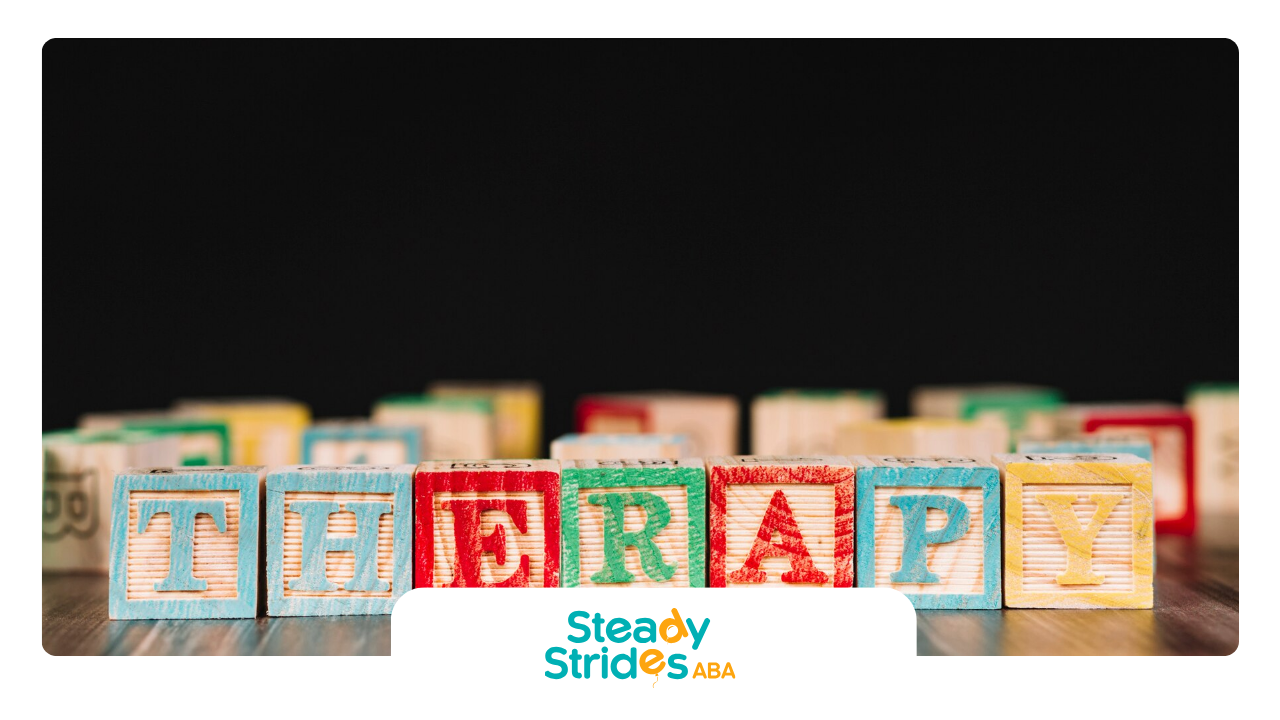Becoming a Registered Behavior Technician (RBT) is a great choice for a rewarding career in behavior analysis. A key part of this process is passing the RBT exam, which is determined by the number of correct answers. Many people ask, "How much time do I need to study to pass the RBT exam on my first try?" There isn’t a specific answer for everyone. However, knowing how the exam is set up and using good study methods along with thorough preparation can really help you do well, making passing the exam a significant milestone in your journey to becoming an RBT.
Understanding the RBT Exam
The RBT final exam checks if you have the knowledge and necessary skills to be a good Registered Behavior Technician, including those required of a certified assistant behavior analyst. This test is given by the Behavior Analyst Certification Board (BACB). It makes sure that you have a solid understanding of applied behavior analysis (ABA) and know how to use it in practice.
The exam has multiple-choice questions on different topics. These topics include measurement, assessment, skill acquisition, behavior reduction, documentation, and ethical practices. To do well on the exam, you need to understand the RBT Task List. This list shows the knowledge and skills that an RBT should have.
What is the Registered Behavior Technician (RBT) Certification?
The Registered Behavior Technician (RBT) certification shows that someone is skilled in applied behavior analysis. To get this certification, professionals must go through strict training and testing. This process helps make sure they can successfully apply behavior strategies. They work under the supervision of a Board Certified Behavior Analyst (BCBA).
Why the RBT Certification is Crucial for Your Career
In applied behavior analysis, the RBT certification is known as the gold standard for behavior technicians. This certification shows your commitment to professional conduct and following ethical guidelines. It helps you build your credibility and improves your chances of getting a job.
Having an RBT certification can give you better career options. It can lead to more responsible roles and could help you earn more money in the ABA field. Many employers view the RBT certification as a sign of quality and skill, which means certified people are often in high demand.
Also, when you have the RBT certification, you can work in many places. These include homes, schools, and clinics. This certification gives you the knowledge and skills needed to truly help people with ASD and other developmental disabilities. You can support their growth and independence.
The Foundation of RBT Exam Preparation
Preparing for the RBT exam needs a smart plan. Start by getting a strong understanding of the main parts of the exam. This means learning the RBT Task List and how the certification process works.
Knowing these things gives you a guide for your study path. It helps you focus your work in the right way. When you understand what you need to do, you can study better and feel ready for the exam.
Key Components of the RBT Exam
The RBT exam is given by the BACB. It checks how well a candidate understands applied behavior analysis (ABA) principles and can use them in real-life situations. The topics in the exam are closely tied to the RBT Task List.
The RBT Task List has clear tasks and duties that RBTs need to do well. This includes skills like measuring, assessing, acquiring skills, reducing behavior, documenting, and behaving professionally.
It's important to know the RBT Task List’s content and structure to pass the exam. Breaking the task list into smaller parts can help. Focus on learning the important knowledge and skills in each section to make studying easier.
The Structure of the RBT Certification Process
The road to becoming a certified RBT has several steps. This process is managed by the Behavior Analyst Certification Board (BACB). It starts with finishing a 40-hour training program from a BACB-approved provider. This program teaches the basics of ABA and the skills needed to work as an RBT.
After the training, candidates must take a competency assessment. This assessment is done by a qualified BCBA. It checks if the candidate can use their knowledge and skills in real-world situations. You must pass this assessment before you can take the RBT exam.
Once you finish the training and assessment, you can apply to take the RBT exam. Passing this exam is the last step to getting certified. This shows that you have the knowledge and skills to work as a Registered Behavior Technician under the supervision of a board certified behavior analyst.
Beginner's Guide to RBT Exam Preparation
Starting to prepare for your RBT exam can seem hard, but if you take it step by step, it can be easier. The main idea is to find the right resources and plan your study routine well.
A good first step is to look for quality study guides, online courses, and practice exams. Also, making a study schedule that fits your learning style and available time can help you stay focused and organized during your preparation for the RBT exam.
Essential Resources and Tools for Starting Your Study Journey
Getting the right resources is important for preparing well for the RBT exam. Luckily, many options fit different learning styles and budgets.
Good study guides, like those from ABA publishers, give a clear view of what is on the exam. These guides usually have practice questions, mock exams, and tips for doing well. They also explain key concepts in detail, helping you understand ABA principles better.
You can also use these resources:
- Online Courses: Many online platforms have RBT exam prep courses. These may include video lessons, interactive quizzes, and personal feedback.
- Practice Exams: Taking practice exams helps you check your knowledge. You can see what you need to improve and get used to the exam format. Websites that focus on RBT exam preparation often offer free and paid practice tests.
Creating Your Personalized Study Plan
Creating a personalized study plan is important for using your study time well and making sure you cover everything for the RBT exam. Start by looking at your current schedule. Find out how much time you can spend studying each day or week.
Next, break the RBT task list into smaller parts. Set aside specific study sessions for each part. If there are topics you find hard, give them more time. Also, plan regular review sessions to help you remember what you learn.
Keep in mind that being consistent is essential. Sticking to your study plan will help you succeed, even on days when you don't feel motivated. Use time management methods, like the Pomodoro technique, to keep your focus during study sessions and make the most of your time.
Step-by-Step Guide to Studying for the RBT Exam
To pass the RBT exam, you need a good study plan. You should break down the large amount of information into smaller, easier parts. This section will show you a clear path for your study process.
Start by learning what the exam covers. Then, practice active learning techniques. We are here to help you at every step. Let's work together to build your knowledge and confidence to succeed in your RBT exam.
Step 1: Familiarize Yourself with the Exam Content Outline
Before you start studying hard, take some time to look over the RBT exam content outline. You can find this outline on the BACB website. It shows all the topics and subtopics you will see on the exam.
Knowing this outline is important. It acts like a guide for how to prepare. It helps you use your study time well and focus on learning the most important knowledge and skills for the exam.
Look closely at the percentage of questions for each content area. This will show you which sections are more important and help you decide what to study first. Don't forget that understanding the RBT Task List is key. This list highlights the key points of knowledge and skills you need as an RBT and is crucial for your study plan.
Step 2: Allocate Study Time Based on Content Area Weight
Once you know the exam content outline, the next step is to plan your study time well. Instead of spending the same amount of time on each topic, look at the weight each content area has in the exam.
Check the percentage breakdown in the exam content outline. If a topic like "Measurement" is 25%, spend a quarter of your total study time on it.
Still, don't forget about areas with a lower percentage. Make sure you understand all topics in the RBT task list. Good time management is important for your preparation. Use scheduling tools, set realistic daily or weekly goals, and track your progress to stay organized and motivated.
Step 3: Engage in Active Learning Techniques
Passive reading won't help you prepare well for the RBT exam. You need to use active learning techniques to really understand the material and remember it better. Active learning means you engage with what you're studying instead of just reading quickly.
Don’t just memorize definitions. Instead, try to understand the key ideas behind behavior analysis, particularly the principles of applied behavior analysis (ABA). Flashcards are great to help you remember important terms and concepts. You should also practice using what you learn in real-life situations. For instance, think about how you would help a client with skill acquisition. How would you use certain ABA methods based on what the client needs?
Using active learning can really improve how you understand and remember things. It helps you think critically, solve problems, and apply your knowledge. This will get you ready for the practical parts of the RBT role.
Step 4: Schedule Regular Practice Tests
As you go through your study plan, it’s important to include regular practice tests. This helps you check your knowledge and see how ready you are for the exam. Practice tests show you what you do well and where you need to improve.
There are many websites and study guides that offer free and paid practice exams for the RBT exam. These practice tests mimic the real exam's format and difficulty, giving you a true sense of what to expect on the day of the exam.
When you take practice tests, look closely at how you perform. Pay attention to the types of questions you often get wrong during the review process. Go back to those topics in your study materials and do more practice tests. Keep working until you consistently pass. Aim to score higher than the minimum passing score to feel more confident for the exam day.
Enhancing Your Study Sessions
Maximizing how well you study is about more than just spending a lot of time. The setup of your study space and the methods you use are very important. These factors help you understand and remember what you learn.
Using good study habits and helpful digital tools can improve your study time. This will help you do well on the RBT exam. Let’s look at some easy ways to make your study sessions better and improve what you learn.
Effective Study Habits and Tips
Creating a good place for learning can help your study sessions. Look for a quiet and bright spot where you can work without being interrupted. Try to reduce any distractions. Keep your phone on silent and let your family or roommates know when you will be studying.
Break up your study sessions into smaller parts. Take short breaks between them to avoid getting too tired. You can use methods like the Pomodoro Method. This method involves studying for a set time and then taking a short break. This can help you work better and keep your mind fresh.
Also, set up regular review sessions to help you remember what you learn. Don’t wait until the last minute to review everything. Instead, plan for short reviews often. This helps you really understand the material and find out what you still need to learn.
Utilizing Digital Tools and Resources
In today’s digital world, you have many tools and resources to help with your RBT exam preparation. Using these can make your studying easier and more effective.
Flashcard apps, like Anki or Quizlet, are great for memorizing important terms, definitions, and ideas. You can also join online study groups on platforms like Facebook or Reddit. These groups let you meet other people preparing for the RBT exam. You can share tips and discuss topics to help clear up anything you don’t understand.
Additionally, many websites and organizations focus on ABA. They provide free resources like webinars, articles, and practice questions. Use these materials to help your learning, see things from different viewpoints, and keep up with any changes to the RBT exam content or format.
Navigating Test Day with Confidence
Test day can bring feelings of excitement and nervousness. Good preparation lays a solid base. However, having a smart plan and a calm mind is just as important for success.
This section gives you the tools and confidence to handle test anxiety. You will also learn how to answer questions well. This way, you can face the RBT exam with strength and come out on top. Let’s see how to manage test day like a champion.
Preparing the Night Before and Morning Of
The night before your RBT exam, make sure to get a good night's sleep. Don't try to study too much at the last minute, as this can make you feel anxious and can hurt your ability to remember things. Instead, do something relaxing like reading a book or taking a warm bath to help you feel calm.
On the morning of the exam, eat a healthy breakfast. Stay away from sugary foods since they can make you crash later. Try to get to the testing center early so you have enough time to check in and prepare yourself.
As you sit down for your exam, take a few deep breaths to ease any nerves. Think about all the effort you've put in to get ready for this day. Remember, you've got this. Good luck!
Strategies for Answering Questions Under Pressure
The RBT exam mainly has multiple-choice questions that evaluate your understanding of the RBT task list and ethical standards. Each question gives you several answer choices. If you come across a hard question, stay calm. First, try to get rid of the answers that are wrong. This process will help you understand the number of questions and is called the process of elimination. It can help you find the correct answer even if you are not sure.
If a question confuses you, don’t spend too much time on it. Just mark it and go on to the next one. You can come back if you have time later. Spending too long on one question can take away time from the others.
Keep in mind, the RBT exam is timed. So, good time management is very important. Move at a steady pace during the exam. Make sure you have time to try all the questions. If you must guess, trust your instincts.
Conclusion
In conclusion, studying for your RBT exam needs a planned approach and commitment. It's important to know the exam parts. Make a study plan that fits you. Use good study habits to succeed.
Be smart with your time based on what is important. Get involved in active learning and set up practice tests. Improve your study sessions by using digital tools and resources.
On the day of the test, prepare early and use strategies to handle stress. If you follow these steps, you can go through the exam with confidence. You will reach your certification goals. Good luck on your RBT exam journey!
As a leading ABA provider in Texas,
Steady Strides ABA is dedicated to supporting aspiring behavior analysts in achieving their RBT certification. Our comprehensive RBT preparation programs offer personalized study plans, expert guidance, and access to valuable resources to help you make the most of your study time. With Steady Strides ABA, you'll be well-prepared to efficiently study for the RBT exam and achieve your career goals. Choose Steady Strides ABA for personalized support and expert guidance on your journey to RBT certification.
Frequently Asked Questions
How many hours should I dedicate to studying each week?
The best study time can change for everyone. It's good to aim for 7 to 10 hours each week for at least one month before your first attempt. This will boost your chances of success. You should change this plan based on what you already know and how fast you learn. Always keep in mind that quality is more important than quantity when you study.












